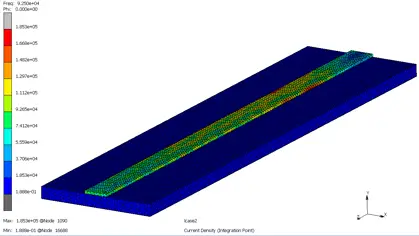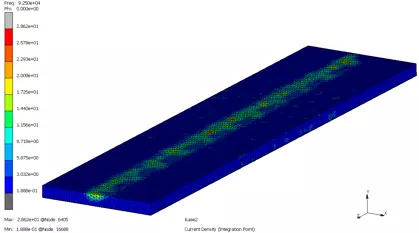D-JOINTS: Composite hybrid joints with electromagnetic compatibility
Background
The D-JOINTS project will provide the industry with novel design tools that can cope with demand for increased output while maintaining the required aerospace quality standards and more specifically increased complexity with reduced weight of the produced parts. The most important feature of the system will be the unique methodologies for modelling the EMC of structural aeronautical structural joints and improving the Lightning Strike Protection capabilities of modern airframe assemblies.
Objectives
- New innovative composite-metal joints with enhanced lightning strike protection systems
- Model the thermomechanical and electrical performance of reference geometry dissimilar joints using numerical analysis
- Improve dissimilar joints considering the electromagnetic performance
- Develop a sizing tool for composite hybrid joints
- Manufacture and test a composite nose part with the new dissimilar joints integrated in an aircraft structure
Benefits
The innovative joints as well as the design tool developed in D-JOINTS provide significant opportunities for improvement in lightning strike performance of joints and robustness of the overall structure. The combined progress in these two fronts make the overall potential improvement bigger than the sum of their parts as the ability to design with a user-friendly tool is enhanced by the incorporation of novel joining capabilities and the efficiency of novel joint designs is boosted by the possibility of exploring their capabilities in a structured and easy to use manner.
 Example of the current distribution after a lightning strike in a geometry with a copper strip attached on to a carbon fibre plate
Example of the current distribution after a lightning strike in a geometry with a copper strip attached on to a carbon fibre plate
 Example of the current distribution after a lightning strike in a geometry with a copper strip attached on to a carbon fibre plate
Example of the current distribution after a lightning strike in a geometry with a copper strip attached on to a carbon fibre plate
Meet the Principal Investigator(s) for the project

Dr Mihalis Kazilas - Dr Mihalis Kazilas is the Director of the Brunel Composites Centre. He has more than 20 years of experience in the composites processing area. He received his PhD in Advanced Materials from Cranfield University back in 2003. His main field of expertise are polymers characterisation and polymer composites manufacturing and joining processes. He is author of several refereed scientific publications in the area of advanced composites manufacturing and process optimisation. Mihalis is a creative thinker who enjoys problem solving and able to work with different stakeholders to achieve the optimum results in both technical and managerial environments.
Work experience:
Sep 2019 – present: Business Group Manager, Polymer and Composite Technologies, TWI, UK
June 2019 – present: Director of the Non-Metallics Innovation Centre, a joint initiative between TWI, Saudi Aramco and ADNOC
Oct 2016 – present: Centre Director, Brunel Composites Innovation Centre, Brunel University London, UK
Feb 2012 – 2019: Section Manager, Adhesives, Composites and Sealants (ACS) section within the Joining Process Group at TWI, UK
May 2006 – Jan 2012: R&D Consultant, Project Engineer, Collaborative Projects Operations Manager at INASCO, Greece
Related Research Group(s)
Brunel Composites Centre - Shared research and technology capabilities, specialising in novel composites processing and joining technologies applied to industrial environments.
Partnering with confidence
Organisations interested in our research can partner with us with confidence backed by an external and independent benchmark: The Knowledge Exchange Framework. Read more.
Project last modified 16/12/2022